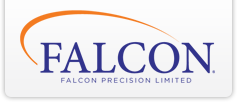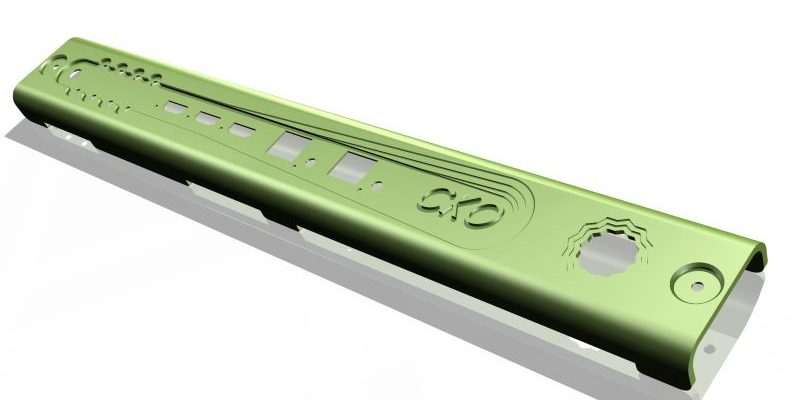Falcon Precision have a long history of working with companies designs to improve the form, fit and function of their products, as well as the manufacturability. From simple PCI brackets to multi-part assemblies, customers have been tapping into Falcons extensive sheet metal design knowledge for 30 years. Below are five examples of what needs to be considered at the design stage.
1) Minimum Bend Radius
The minimum bend radius of a part must be the same as the thickness of the material being formed. We can bend parts to a variety of radii but the minimum must be the same as the thickness of the material. Consider what is required for your design; using the minimum bend radius is considered standard for the industry but a larger radius will generally give a stronger part.
2) Minimum Edge Distance
Keep all holes and cut-outs at least the thickness of the material away from other edges. It is possible to go under this recommendation with some materials but this is a good starting point.
3) Design for Punch or Laser?
This consideration is often overlooked at the design stage and is regularly just an afterthought. Punching a part will almost always be cheaper than laser cutting, however laser cutting allows more convoluted shapes and can generally cut thinner gaps than a punch. Does your part have a lot of countersunk holes? It takes less than 0.5 seconds to countersink a hole on a punch, whilst it takes 12 seconds for a pillar drill to do the same job! Try to design for punch if that is the case by changing over to a simpler design with less curves.
4) Design for Scan Cut
Falcon Precision are known for being specialists in fabricating boxes for the computer industry. A common design feature of this type of work is a large number of rectangular cut-outs that are often used for air vents or grills. This feature is perfect for Falcon’s Bystronic Fibre Laser ‘Scan Cut’ feature, which can cut steel parts much faster than the normal pierce cut > outline cut method used most of the time. Many of Falcons customers benefit from the reduced laser time on their parts; see the video below for a display of what scan cutting can do (seconds 0>20).
Scan Cut Example
To use this feature, parts must be made from mild steel or stainless, and must be no thicker than 1.5mm.
5) Take advantage of our In-house CNC Milling
Very often computer cases have a dozen sheet metal components, yet customers commonly only interact with the front panel. Make your products stand out from the competition by having your company logo engraved on the front face, or incorporate a small recess to perfectly house that custom connector. The ‘feel’ of the product is often what makes it, so make sure your product doesn’t fall short in this area.
For more on sheet metal design at Falcon, click on the link below.












